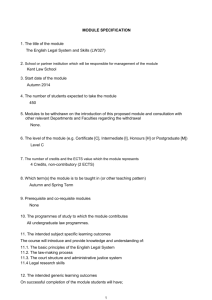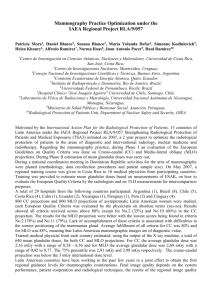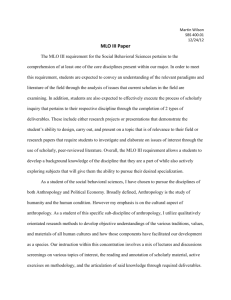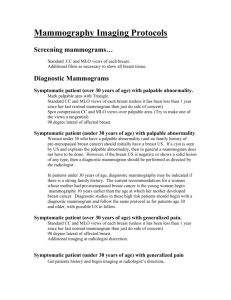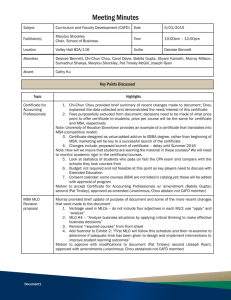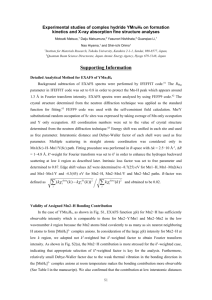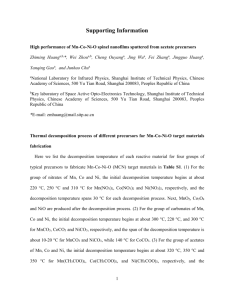Word file (1.15 MB )
advertisement
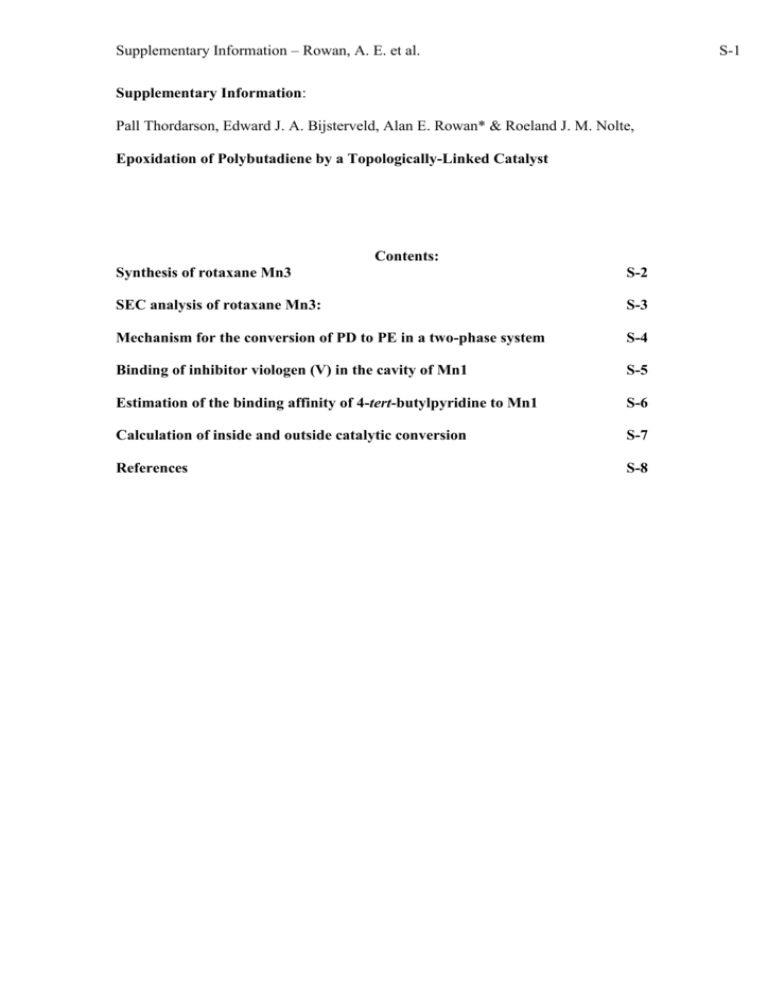
Supplementary Information – Rowan, A. E. et al. S-1 Supplementary Information: Pall Thordarson, Edward J. A. Bijsterveld, Alan E. Rowan* & Roeland J. M. Nolte, Epoxidation of Polybutadiene by a Topologically-Linked Catalyst Contents: Synthesis of rotaxane Mn3 S-2 SEC analysis of rotaxane Mn3: S-3 Mechanism for the conversion of PD to PE in a two-phase system S-4 Binding of inhibitor viologen (V) in the cavity of Mn1 S-5 Estimation of the binding affinity of 4-tert-butylpyridine to Mn1 S-6 Calculation of inside and outside catalytic conversion S-7 References S-8 Supplementary Information – Rowan, A. E. et al. S-2 Synthesis of rotaxane Mn3 O = n n 61% 22% O n n 4: R = OH 5: R = Cl R i) R CN 17% CN n = 50-100 - 2 PF6 H3N N N Mn N N O O O 2x O N N O O N ii) N 6 O O O + N O n N N H N O N CN N H CN n = 50-100 N N bipy2PD Mn1 2x O iIi) Br 7 N N Mn N N O O O N O O N N O O N N Mn N N O O N N O N O N H O CN n CN n = 50-100 N H O N O OO O O N N O O N O N O N Mn3 Scheme S1 Scheme S1. Reagents and conditions: i) Polymer 4 (Aldrich, Mn = 4200, PD = 1.8, 22% cis-1,4-polybutadiene, 61% trans-1,4-polybutadiene, 17% 1,2-polybutadiene), excess SOCl2, CHCl3 solvent, reflux 3h, not isolated. ii) 5, excess 6, Et3N, CH3CN/CHCl3 solvent, under Ar overnight, then ion-exchange with NH4PF6(aq) followed by chromatography over silica (CHCl3/CH3OH/CH3NO2, 6:1:1, v/v/v) giving bipy2PD in 71% yield. iii) 2 equiv. Mn1, 1 equiv. bipy2PD, excess 7, DMF solvent at 90-100 C for 3-10 days, then ion-exchange with NH4PF6(aq). The product was purified by repeated size-exclusion chromatography (Biobeads SX-1) using THF as an eluent to give Mn3 in 43% yield, green solid. UV-vis (CHCl3/CH3CN 1:1 v/v): 269.5 [O.D. (g Mn3/dm3) 7.8], 341sh (2.1), 375.5 (2.8), 402.5sh (2.2), 480 (4.6), 585 (0.5), 617.0 (0.5), 753.0sh (0.05) nm. See also SEC data in Figure S1. Supplementary Information – Rowan, A. E. et al. S-3 SEC analysis of rotaxane Mn3 at 618 nm at 254 nm at 618 nm at 618 nm arb. intensity Mn3 Bipy2PD Mn1:bipy2PD:Mn1 Mn1 Elution time (min) Figure S1. Analytical size-exclusion chromatography (SEC) of MnIII-porphyrin compounds Mn1 and Mn3, bipy2PD, and the bipy2PD:Mn1 mixture. The experiments were carried using a Shimatzu system (Mixed D-300 column 300x7.5mm, PL gel, 5 m) and THF as an eluent. The traces are normalized to maximum intensity. The porphyrin compounds Mn1 and Mn3 were monitored at a wavelength corresponding to a high-intensity Q-band (618 nm). The bipy2PD polymer showed no significant absorption above 300 nm. The pseudo-rotaxane mixtures Mn1:bipy2PD:Mn1 where monitored at the Q-band wavelength (618 nm) of the porphyrins to investigate if the porphyrin stayed attached to the polymer on the SEC-column, which turned out not to be the case. Supplementary Information – Rowan, A. E. et al. Mechanism for the conversion of PD to PE in a two-phase system Figure S2. Schematic representation of how the conversion of PD to PE catalysed by Mn1 in a dichloromethane-water (CH2Cl2/H2O) two phase system might proceed. The PD is dissolved in CH2Cl2 and the catalyst is present at the interphase (as concluded from monolayer experiments). Conversion of PD leads to hydrophilic PE which will prefer to be located in the aqueous phase, leading to a net movement of the polymer as indicated by the arrow. S-4 Supplementary Information – Rowan, A. E. et al. S-5 Binding of inhibitor viologen (V) in the cavity of Mn1 Viologens (N,N’-dialkyl 4,4’-substituted bipyridines) like V have a very high affinity to Mn1.1,2 For instance, in 1:1 CHCl3/CH3CN (v/v) the association constant of the complex between V to H212 (the free base analogue of Mn1) has been determined to be Kass = 6 x105 M-1,2 and in 4:1 CHCl3/CH3CN (v/v) Kass = 3 x 107 M-1.3 From 1H NMR data (both one- and two-dimensional) it was demonstrated that V binds within the cavity of H21.2 Using NOESY NMR data as the basis, molecular modelling studies showed the geometry of this complex to be as shown here in Figure S3b,S3c. This geometry has been recently validated by X-ray crystal structure of the complex between H21 and the N,N’-dihydroxyethyl derivative of viologen V.4 a b N ON O O O N N N M N N O O N N c O ON O Figure 3S. a) Schematic representation of the complex between Mn1 and V. b) Sideon view of the Mn1:V complex (wire-frame model). c) Edge-on view of the complex (space-filling model). Supplementary Information – Rowan, A. E. et al. Estimation of the binding affinity of 4-tert-butylpyridine to Mn1 In order to quantify to what extent the “outside” mechanism contributes to the epoxidation reaction catalysed by Mn1 in the presence of the ligand 4-tertbutylpyridine (tbpy), it is necessary to estimate the strength of association between tbpy and Mn1. We measured the association constant (Kass) of the Mn1:tbpy complex by UV-vis titration. Unfortunately, the binding of tbpy to Mn1 (and in general of pyridine ligands to MnIII porphyrins5) causes only a very small shift of the Q-bands (0.5-1 nm) and no detectable shift of the Soret-band. The association constant was found to be Kass = 60 M-1,6 about ca. 10 times lower than the association constant of the corresponding zinc(II) porphyrin2 (Zn1) complex Zn1:tbpy which can be measured accurately (Kass = 625 M-1). Assuming Kass = 60 M-1, it can be calculated that under the catalysis conditions used for the experiments in Table 1, entries 1-4 (500 equiv. tbpy per Mn1), only 3% of the porphyrin Mn1 does not have bound tbpy. S-6 Supplementary Information – Rowan, A. E. et al. Calculation of inside and outside catalytic conversions N O O O N O O N N N M N N O O O O N O N O N Catalyst Mn4 (chemical structure without axial ligand (left) and schematic structure with axial ligand (right)) is a fully blocked rotaxane analogue of Mn1, which was used as a control to calibrate the percentage of epoxidation on the outside of Mn1. This catalyst was synthesized by the coupling of 7 (see scheme S-1) with 4,4 bipyridine in the presence of Mn1.1 a) Calculation of inside and outside conversion for the Mn1-PD system. A control experiment with Mn4 was carried out using conditions identical to those reported in Table 1, entry 5, and in the presence of tbpy. The measured turnover number/h was 3 ±0.5. Since this catalyst can only carry out epoxidations on the outside, it can be calculated from the relative turnover numbers/h that for Mn1-PD (15, see entry 5, Table 1), 80% of the polymer epoxidation occurs on the inside of the catalyst Mn1. b) Calculation of inside and outside conversion for the Mn1-bipyPD system. From rate data A control experiment with Mn4 was carried out, using conditions identical to those reported in Table 1, entry 6, and in the presence of tbpy. The measured turnover number/h was 4 ±0.5. By comparison with the turnover number/h for Mn1bipyPD (7, see entry 6, Table 1), it can be calculated that 45% of the polymer epoxidation occurs on the inside of the catalyst Mn1. From product analysis The percentage inside reaction for Mn1-bipyPD can also be calculated by a weighted comparison of the percentage cis and trans epoxide formed by Mn1, Mn2 (100% conversion outside) and Mn3 (100% conversion inside) and the percentage cis-trans alkene in the starting polymer. Using this approach a value of 55% conversion inside Mn1 is obtained. In a separate experiment using the conditions described in Table 1, entry 8, a fivefold excess of the polymer substrate bipy2PD was added to Mn3. In this experiment no additional polymer conversion was observed (within experimental error), indicating that at the given concentrations, no significant intermolecular catalysis occurs. S-7 Supplementary Information – Rowan, A. E. et al. References: 1. Rowan, A. E., Aarts, P. P. M. & Koutstaal, K. W. M. Novel porphyrinviologen rotaxanes. Chem. Commun., 611-612 (1998). 2. Elemans, J. A. A. W. et al. Porphyrin clips derived from diphenylglycoluril. Synthesis, conformational analysis, and binding properties. J. Org. Chem. 64, 70097016 (1999). 3. Thordarson, P. et al. Highly negative homotropic allosteric binding of viologens in a double-cavity porphyrin. J. Am. Chem. Soc. 125, 1186-1187 (2003). 4. Rowan, A. E. et al., unpublished results. 5. Yuan, L-C. & Bruice, T. C. Influence of nitrogen base ligation and hydrogen bonding on the rate constant of oxygen transfer from percarboxylic acids and alkyl hydroperoxides (meso-tetraphenylporphinato)manganese(III) chloride. J. Am. Chem. Soc. 108, 1643-1650 (1986). 6. Tabata, M. & Nishimoto, J. In The Porphyrin Handbook, Vol. 9, Database of Redox Potentials and Binding Constants (eds Kadish, K. M., Smith, K. M. & Guilard, R.) 221-417 (Academic Press, San Diego, 2000). S-8
